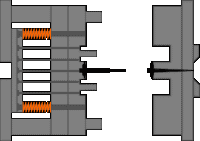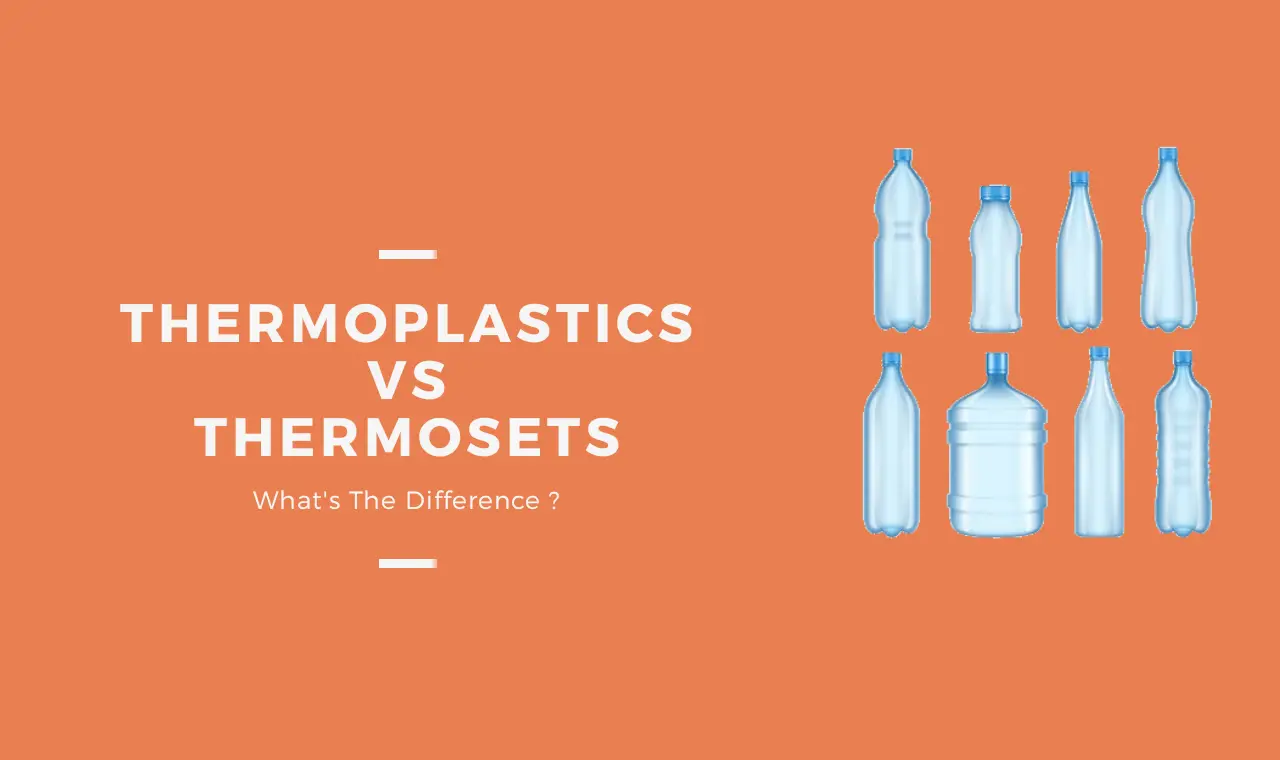Selection of type of mold is an essential task in the product development process. Choosing the wrong type of mold can cost thousands of dollars. Although there are plenty of injection mold types available, in this article we will discuss Two plate mold vs Three plate mold.
What Is Injection Mold
Injection molding is a widely used manufacturing method to manufacture simple to complex plastic parts at a very fast rate. The key component of an injection molding process is an Injection mold, which creates the space for liquid plastics to flow and gets the shape of a core and cavity. A typical injection mold is made using steel or aluminum.
Choosing a mold type and designing a mold needs a high level of experience and different considerations. Every type of mold serves a different purpose and when used properly can offer the best value.
Key factors to decide Injection mold type
Here are a couple of key factors that play a big role in deciding what types of mold you want to use. A good part design can make the difference in choosing a cost-effective mold.
- The number of parts required per shot.
- The part has an appearance surface
- The part has a high gloss value
- The part that has a straight pull or lifter/ slider that need to be used
- The part has or does not have a uniform thickness
- Types of plastic material need to be used
- Regrind is permissible or not
- Cost to feature ratio.
- Gate location preference
Types of Injection mold
Typically mold makers suggest following types of injection mold when an engineer presents a plastic part design.
- A single cavity or multi-cavity mold
- Hot runner or cold runner mold
- Two Plate or Three plate mold
The first type is purely depends on the part size and quantity , but the last two depends of part quality, cost and appearance.
Two Plate Mold Vs Three Plate Mold
We will figure out the key defenses between two plate mold vs three plate mold based on what key components are required for both mold types, what are the advantages and disadvantages both types of mold offers.
What is a Two plate mold
This is the simplest type of mold and widely used for low-cost plastic parts. It has a core, cavity, and both spits at the parting line. It opens in a single-stage operation. In a two-plate mold, the runner and gate must be at the parting line. Because of that when the part is ejected the runner also comes with it and needs a separate process to break it. Although Two Plate mold is a cheaper and simple option for high-quality parts this process is not preferred.

Key Components of Two Plate mold
- Core Plate
- Core
- Cavity Plate
- Cavity
- Runner
- Gate
- Ejector Pin
- Ejector plate
- Top clamping plate
Advantage of Two Plate mold
Following are the key advantages of a Two-Plate mold.
- Simple and effective design possible
- Low-cost mold design and low repair cost
- Skilled mold maker not required
- Lower cycle time
- Good for single cavity molds
Disadvantages of two plate mold
Following are the key disadvantages of a two-plate mold
- The parting line and gate should align together
- A separate process required to remove the runner
- The problem of short-shot in case of multi-cavity mold
- Achieving a good appearance surface is a costly affair
- Not suitable for high precision parts
What is a Three plate mold
The basic difference between a three-plate mold compare to a two-plate mold is that in three plate mold an extra runner plate gets added. So runner will be in the runner plate and you will have the flexibility of placing the runner anywhere. Gate location also gets the leverage of locating it anywhere. The mold opens in two stages. Though adding a runner plate adds cost to the mold but for good quality precision parts, three plate molds are the best choice.

Key Components of Three Plate mold
Apart from all components of two plate mold only a runner plate gets added in three plate mold configuration.
Advantage of Three Plate mold
Following are the key advantages of a Three-Plate mold
- Eliminates the runner removal process
- Flexibility to place runner and gate anywhere in the part
- Better part finishes are possible due to the flexible gate location
- No issue with the short shot as the molten plastic can flow easily
- Highly precise and good appearance is possible
Disadvantages of Three Plate mold
Following are the key disadvantages of a three-plate mold
- Costlier option than two plate mold
- Cycle time is more compare to two plate mold
- Very complex mold design
- Mold design and repair cost is high
- Not a cost-effective choice for low quantity
Conclusion
Both two plate and three plate mold have their benefits and drawbacks. Choosing any of them depends on the process and type of parts. One more important factor is the volume of parts needed to manufacture. Typically if the part has an appearance surface defined and the design requires a high precision part, it gets molded in three plate mold as we can achieve any sort of appearance and precision in three plate mold.
But if the part is getting used in the inner structure of products and there is no chance that it will catch the consumer’s eye, then a two-plate mold can be used to mold that part. However, a good finish can also be achieved in two plate mold but it needs proper design and a skilled mold maker.
I hope this article could help to find the difference between a two-plate mold vs a three-plate mold. If I missed anything or you want to add up anything in this article, then please do write in the comment section and I will be happy to include that piece of information.
